Awareness of the importance of living in healthy environments is growing. And the search for materials that don't contain and don't release pollutants is intensifying, ensuring a broad selection of esthetic solutions.

Trend
Which materials for a healthy building?
12 October 2022
Do the homes and buildings we live in impact our health? The answer is yes, and awareness of this important connection is increasingly widespread. The environments where we spend most of our days interact with us through the air, light, and elements present on the surfaces. This is often contrary to common sense, which has developed a particular sensitivity to issues related to environmental and air pollution, but tends to see indoor spaces as being more safe. The healthiness of indoor spaces is an increasingly central area of focus for well-being and is largely determined by building materials and furnishing elements. Thanks to the benefits they offer, porcelain tiles contribute to indoor healthiness: an example is the absence of porosity that prevents the onset and proliferation of bacteria, mites, fungi, and molds.

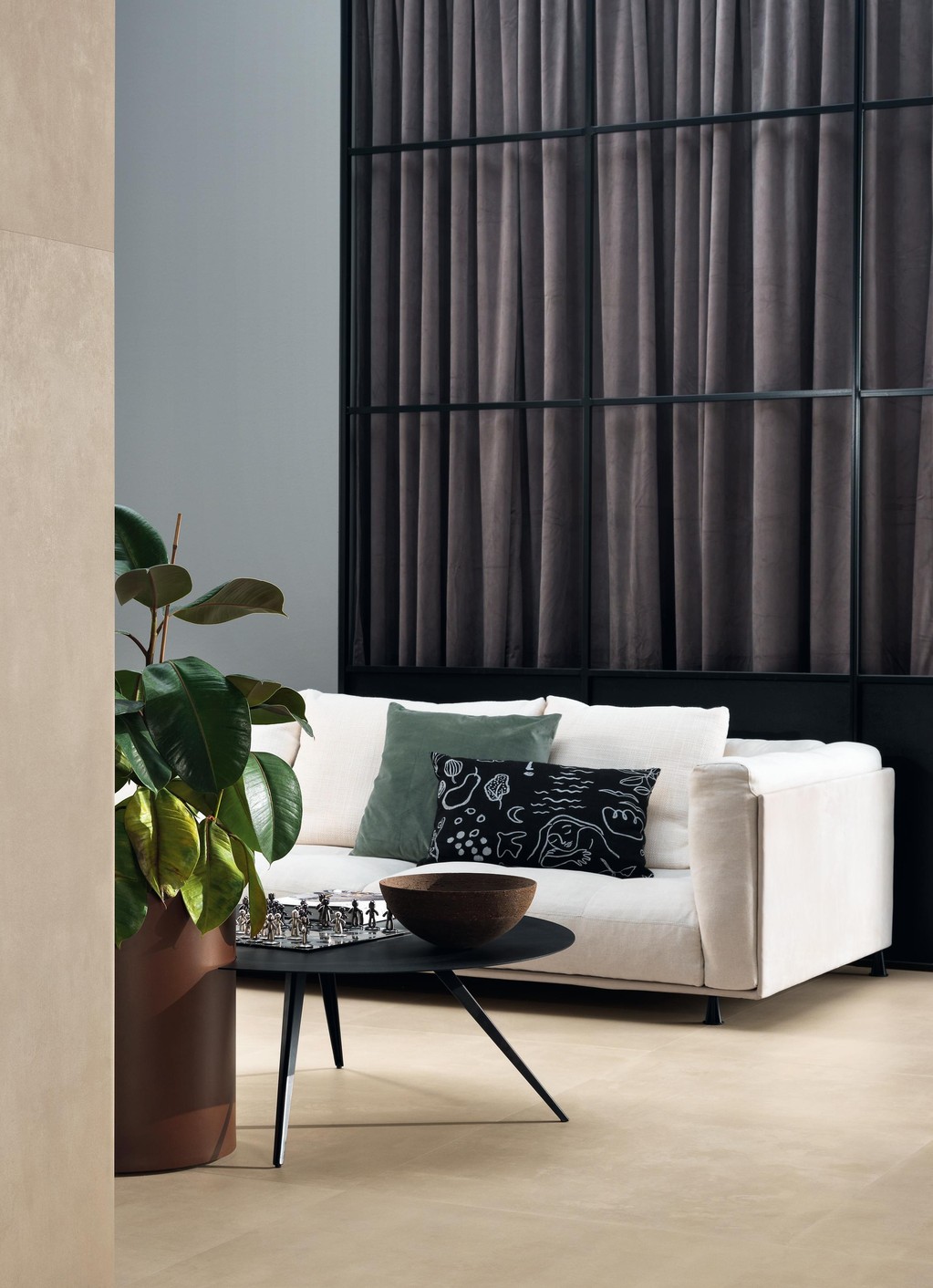
How does a building “get sick” and make people sick?
A building can facilitate the onset of sicknesses, especially when the structure itself is "sick." In fact, so-called "sick building syndrome" (SBS) has been known since the 1970s. A wide range of symptoms is linked to the time spent in indoor environments with little or no change of the air, which also amplifies the possible harmfulness of the substances present within. This is the case in schools, hospitals, nursing homes, and private homes where the choice of low-quality materials generates negative effects that can have repercussions on health.
Where can you start to make a building healthy?
An excellent starting point is the choice of quality materials, with characteristics that are intrinsically healthy and able to help eliminate harmful substances from the outside. Porcelain tiles and white body wall tiles perfectly satisfy these requirements thanks to the nature of their chemical structure – stable and inert – and the process used to produce them, offering those who choose them maximum guarantees of health, hygiene, and environmental well-being.
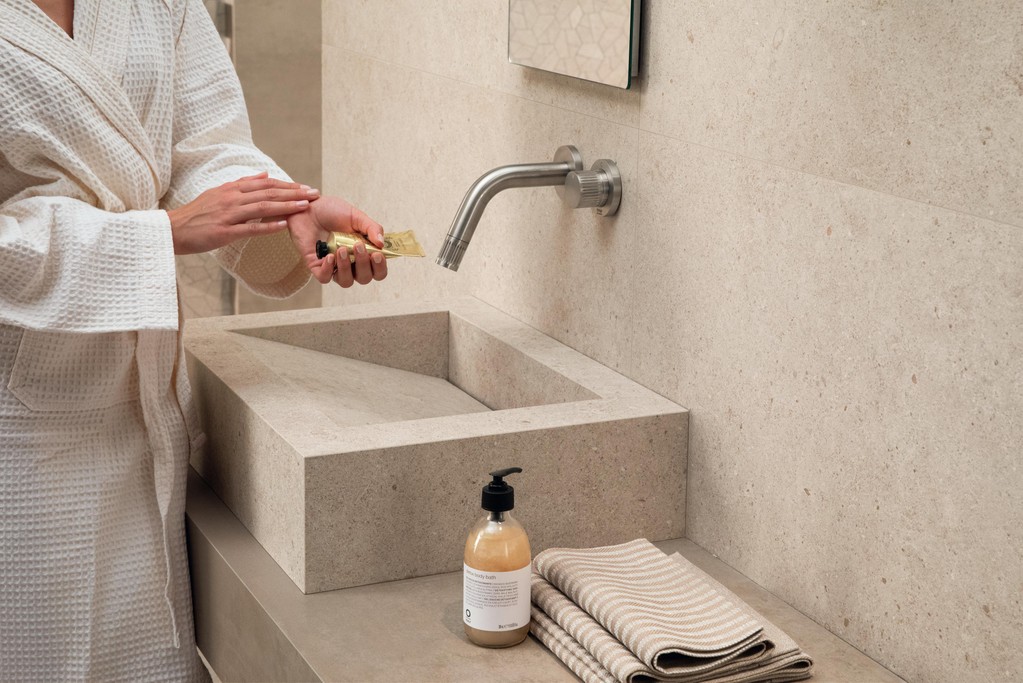
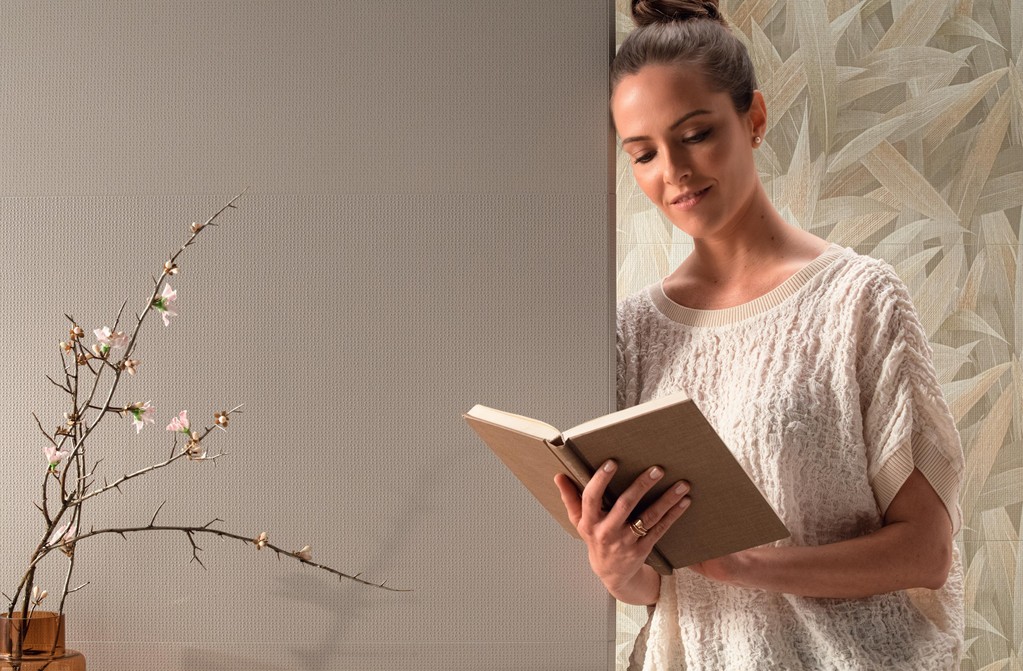
What are the enemies of your health when indoors?
Enclosed spaces can accommodate unwanted tenants such as chemical, physical, and biological pollutants. Chemical pollutants (e.g. VOCs, volatile organic compounds) come both from everyday products (deodorants, detergents, solvents) and from furnishings and building materials. Formaldehyde belongs to this category of pollutants and is one of the most common, often linked to the use of paints and resins, another is benzene, which tends to be absorbed by carpets or wallpaper, and then there's lead, used very frequently for decades and regulated only recently. Another is radon, an inert natural gas that can accumulate in rocks and clays and end up in building materials. Finally, biological pollutants such as bacteria, germs, fungi, and mites proliferate in conditions of particular humidity or poor hygiene and are often responsible for respiratory diseases, asthma, or allergies.
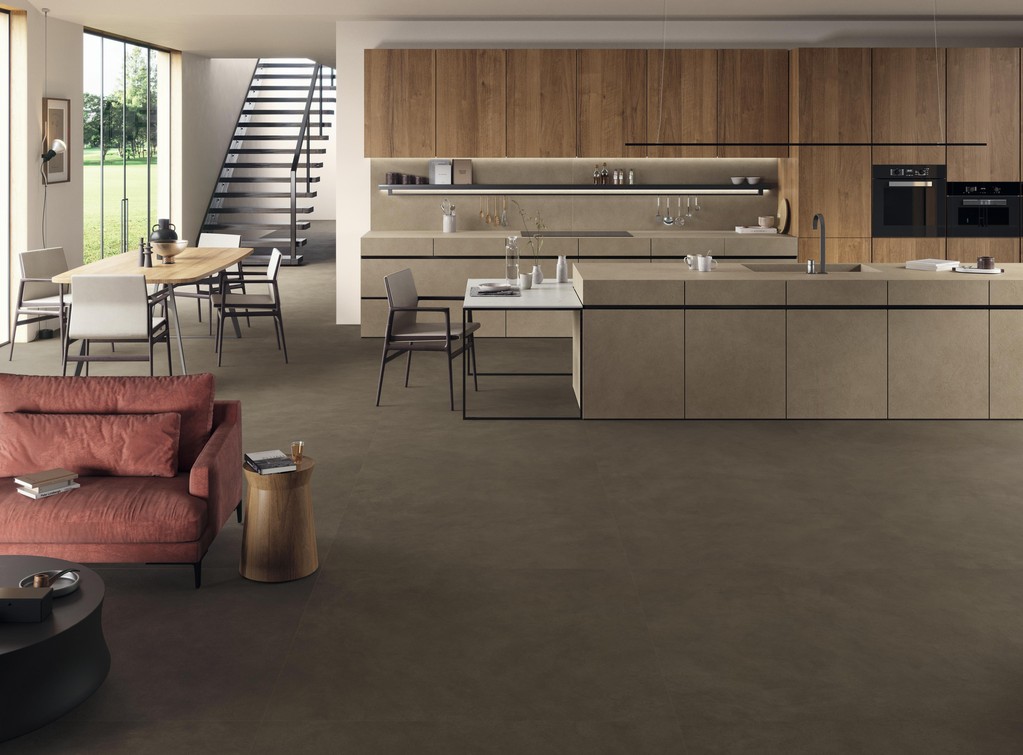
How can you defend against pathogens in indoor spaces?
The safest way is to design the interiors with materials that offer guarantees of health. Ceramic tiles are inert materials with a stable structure, produced using very high temperatures so they don't contain or emit chemical pollutants (VOCs) and do not release radon during installation or use. Specifically, Atlas Concorde ceramic tiles don't use any dyes containing lead, nor do they release cadmium, another harmful metal, and are therefore completely non-toxic. Finally, the floor and wall tiles are easily cleaned so as to avoid the proliferation of mold, allowing for continuous, effective hygiene.

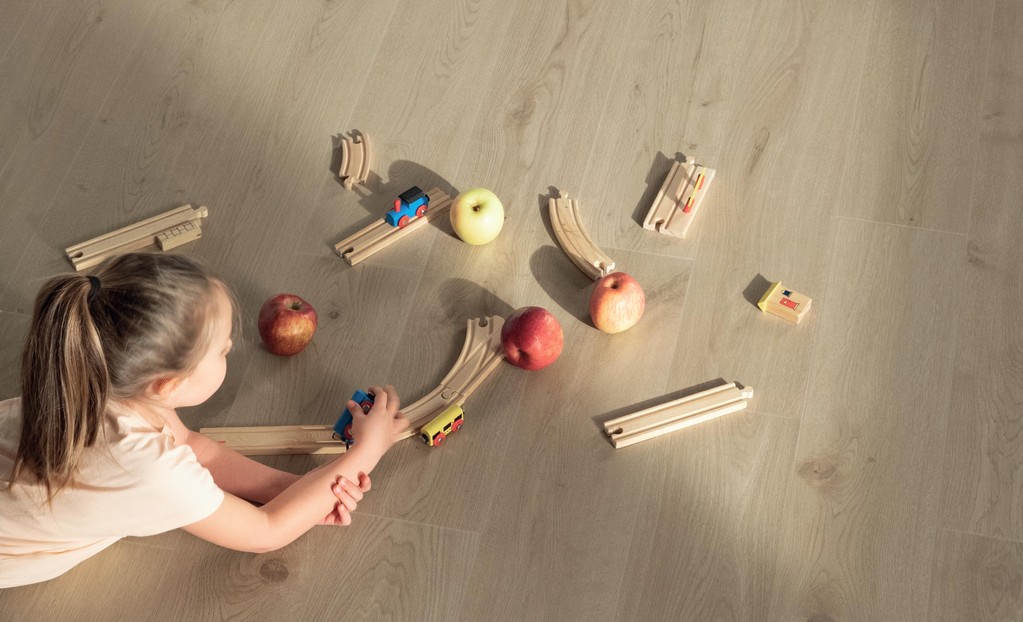
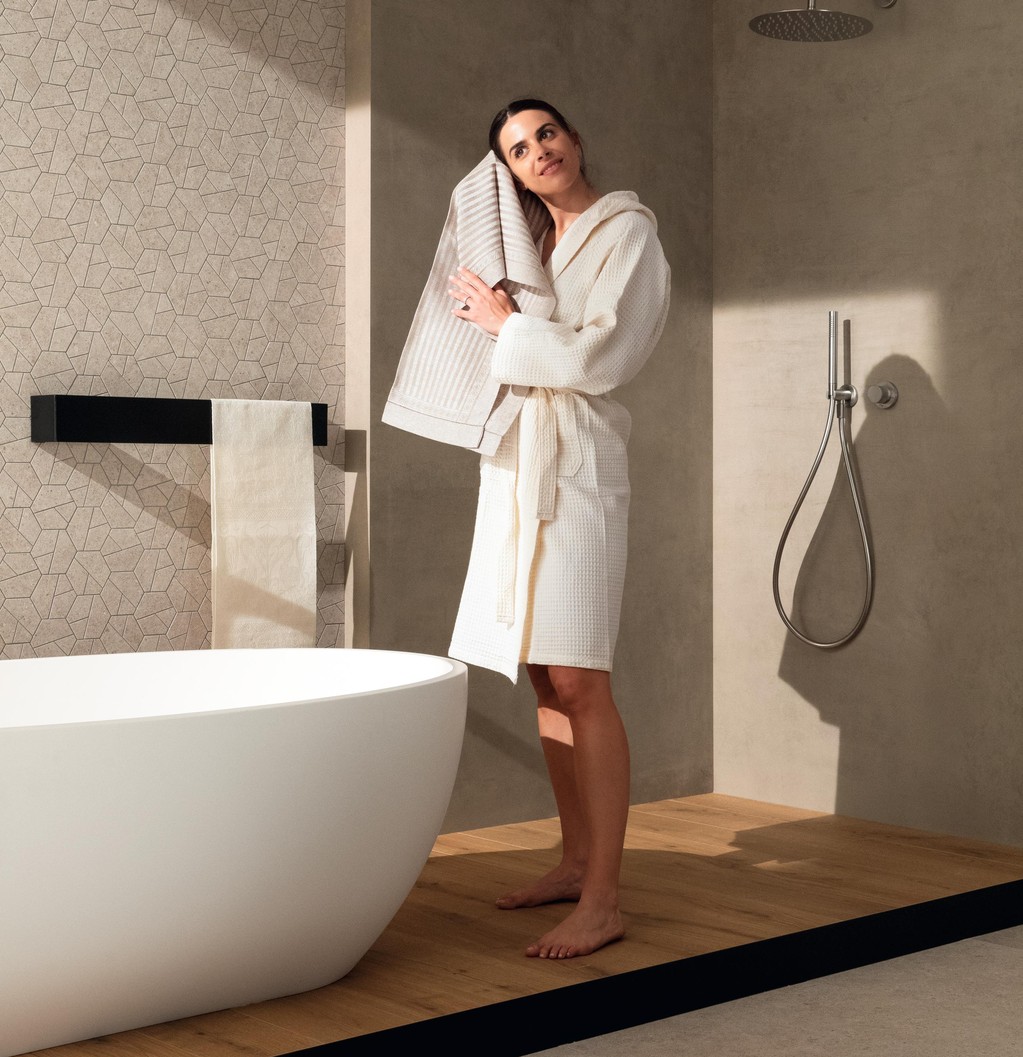
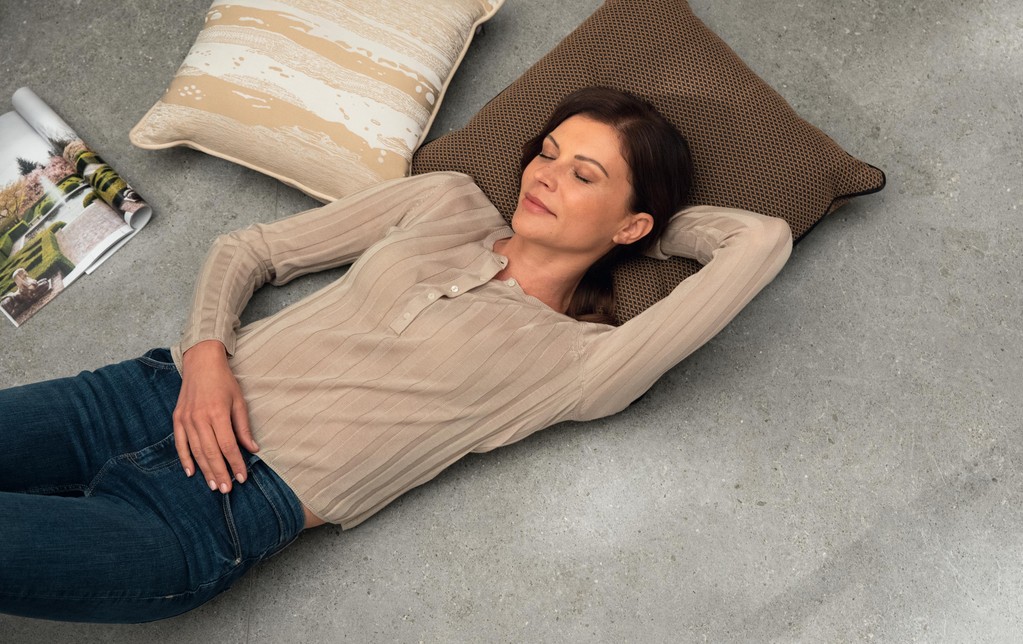









































.jpg?cropw=4096&croph=2654.2479700187387&cropx=9.695217308093677e-13&cropy=76.7520299812622&cropmode=pixel#?w=3840&q=100)






































.tif?cropw=4036.303976681241&croph=2705.4159900062464&cropx=59.69602331875912&cropy=25.584009993753906&cropmode=pixel#?w=3840&q=100)
.jpg?cropw=4096&croph=2978.1919633562356&cropx=0&cropy=93.80803664376384&cropmode=pixel#?w=3840&q=100)


.jpg?cropw=4096&croph=2304&cropx=0&cropy=215.39045431878446&cropmode=pixel#?w=3840&q=100)




